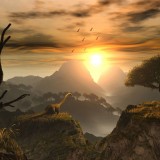
Vedic Dawn : The Spiritual Reawakening
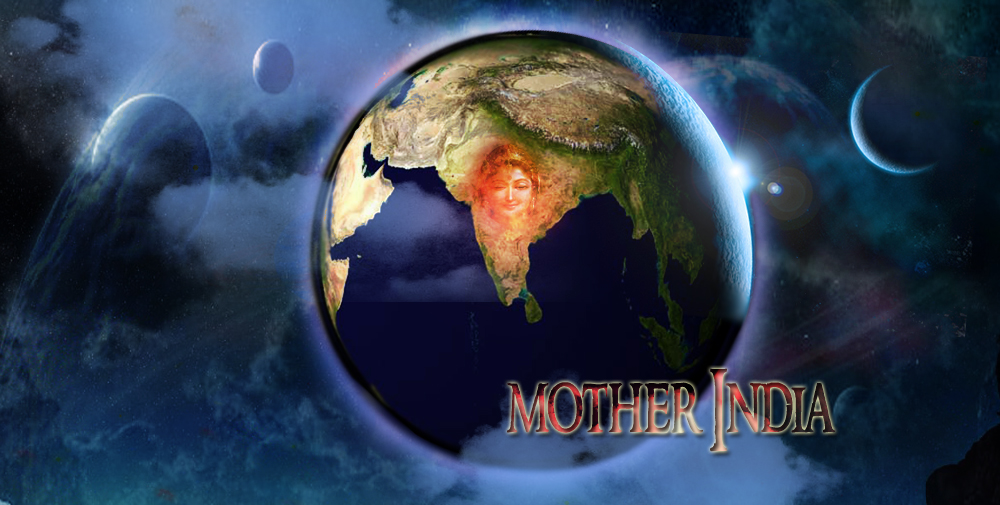
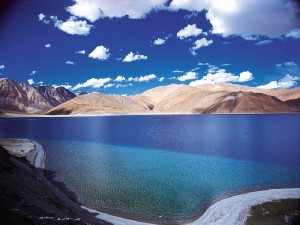 The subcontinent of India is a vast geographical region that has developed its own unique and yet very diverse culture over the past ten thousand years or more.
The subcontinent of India is a vast geographical region that has developed its own unique and yet very diverse culture over the past ten thousand years or more.
These developments in India have been aided by the development of culture and civilization in the rest of the world. Yet India has also contributed greatly to the development of culture and civilization in the rest of the world – a fact that modern history books and their western cultural bias tend to overlook. Most importantly, the nature of India’s civilization is understandable only according to developments within the region, not simply according to outside influences.
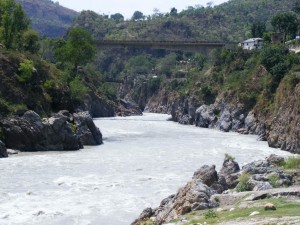 As a subcontinent, India is marked by the massive Himalayas to the north and the Indian Ocean to the south, with mountains and deserts to the West, and mountains, jungles and rain forest to the East, making for clearly defined natural boundaries. The many vast river systems flowing in the subcontinent, from the Indus and Ganga in the north to the Godavari and Kaveri to the south, have linked the land and people together and helped sustain a common culture. While India is not entirely geographically isolated from the rest of the world, it does have its distinct geographical identity that has provided foundation to its particular civilizational traits.
As a subcontinent, India is marked by the massive Himalayas to the north and the Indian Ocean to the south, with mountains and deserts to the West, and mountains, jungles and rain forest to the East, making for clearly defined natural boundaries. The many vast river systems flowing in the subcontinent, from the Indus and Ganga in the north to the Godavari and Kaveri to the south, have linked the land and people together and helped sustain a common culture. While India is not entirely geographically isolated from the rest of the world, it does have its distinct geographical identity that has provided foundation to its particular civilizational traits.
India is a vast tropical and subtropical region with abundant rivers and good soils that are very favorable for agriculture, the development of large populations, and urban growth.
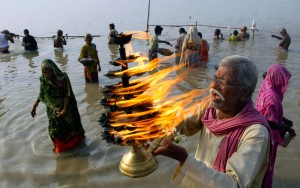 Even today the subcontinent of India is the most heavily populated region on the planet and has among the largest and most numerous cities.
Even today the subcontinent of India is the most heavily populated region on the planet and has among the largest and most numerous cities.
The many cultural traditions of India include a widespread honoring of nature, the land and the Earth, so much so that we have the concept of Bharat Mata or Mother India, as an extension of the concept of Mother Nature that many peoples and cultures share. In examining the history of India we should not forget the geographical context and the factors that both link the people of the subcontinent together, and also shield them from outside influences.
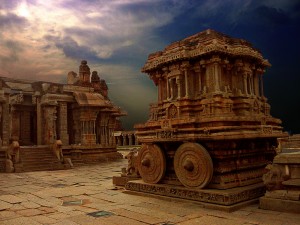 India has produced its own type of civilization, marked as one of the great civilizations of the world, most recently perhaps in Samuel Huntington’s Clash of Civilizations. We could call this dominant civilization of the subcontinent of India, “the culture and civilization of Dharma.” Dharma implies honoring the ethical and spiritual laws of the universe, and regarding all life and all nature as sacred. Dharmic civilization is based upon Dharmic values.
India has produced its own type of civilization, marked as one of the great civilizations of the world, most recently perhaps in Samuel Huntington’s Clash of Civilizations. We could call this dominant civilization of the subcontinent of India, “the culture and civilization of Dharma.” Dharma implies honoring the ethical and spiritual laws of the universe, and regarding all life and all nature as sacred. Dharmic civilization is based upon Dharmic values.
India has given rise to what is probably the greatest diversity of spiritual, mystical, religious, and philosophical traditions in the world – yet all these are based upon an acceptance of dharma and dharmic values, and an effort to practice these in daily life. India’s dharmic culture over the last several thousand years has had a great influence on South and East Asia, and some influence to the West as well
Whether the spiritual traditions of India have been Hindu, Buddhist, Jain or Sikh, whether they have been Vedic or non-Vedic, theistic or non-theistic, they all share a common concern for Dharma.
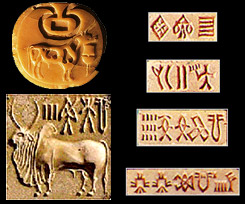 Such a dharmic culture includes the practices of ritual, mantra, yoga and meditation to achieve or realize a higher state of consciousness and awareness extending beyond all time, space and causation to the Supreme Reality, however may wish to define it.
Such a dharmic culture includes the practices of ritual, mantra, yoga and meditation to achieve or realize a higher state of consciousness and awareness extending beyond all time, space and causation to the Supreme Reality, however may wish to define it.
Dharmic symbols and practices can be seen in the oldest artifacts of civilization in India. These include the sacred pippal tree motifs, swastikas, figures in meditation postures, images of sacred bulls and other sacred animals, sacred water tanks, and sacred fire altars that can be found in Harappan archaeological sites going back at least five thousand years in the country.
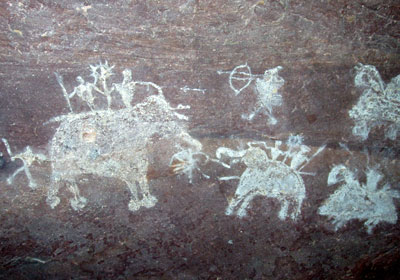 The current human species, according to the ‘Out of Africa theory’, is at least 200,000 years old. According to theories of local development of the human species in diverse centers on the planet, perhaps 2,000,000 years old. In either case humanity is much older than our meager historical time line for civilization of around five or six thousand years that still dominates textbooks today. There have been human beings of our current species inhabiting India for at least 70,000 years, possibly much longer as the coastal areas for human habitation during the Ice Age period have largely gone under water.
The current human species, according to the ‘Out of Africa theory’, is at least 200,000 years old. According to theories of local development of the human species in diverse centers on the planet, perhaps 2,000,000 years old. In either case humanity is much older than our meager historical time line for civilization of around five or six thousand years that still dominates textbooks today. There have been human beings of our current species inhabiting India for at least 70,000 years, possibly much longer as the coastal areas for human habitation during the Ice Age period have largely gone under water.
Ancient India’s texts, both Hindu and Buddhist, speak of earlier humanities going back many thousands of years before our current historical era. The Hindu Puranas outline five Manus or humanities, of which ours, Manu Vivasvan, is only the last.They connect human life with longer cycles of tens of thousands of years, extending to many billions of years.
Regardless of the details of these different cycles, clearly dharmic traditions have a place for human culture and spirituality going back long before what our current historians estimate, and which could hold the heritage of yet earlier humanities still unknown to us. This is perhaps why Hinduism has no historical origin or founder but defines itself as Sanatana Dharma or the ‘Eternal Tradition’.
In this regard, India, with its location by the tropics and the ocean, has been able to sustain a favorable climate for human life throughout the Ice Ages.During the last Ice Age, the most habitable region of the planet was India and Southeast Asia, which remained comparatively warm in temperature and had sufficient rainfall.
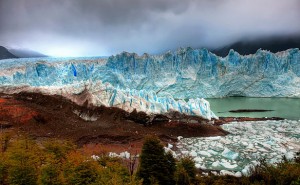 The Ice Ages rendered most of Europe and Central Asia difficult to inhabit owing to cold and ice. Yet the Ice Ages also caused the interiors of larger tropical continents, like Africa, to be difficult to inhabit owing to arid and dry conditions. India, though having rising waters along the coastlines at the end of the Ice Age, had interior tropical regions that would have been free of such flood danger, and allowed for a greater continuity of human populations and culture.
The Ice Ages rendered most of Europe and Central Asia difficult to inhabit owing to cold and ice. Yet the Ice Ages also caused the interiors of larger tropical continents, like Africa, to be difficult to inhabit owing to arid and dry conditions. India, though having rising waters along the coastlines at the end of the Ice Age, had interior tropical regions that would have been free of such flood danger, and allowed for a greater continuity of human populations and culture.
This means that India could preserve the memory of an older spiritual culture that may connect current civilization to eras before our present accounts of history.This has a basis in the land and climate of the region. Indeed India’s dharmic culture may be the legacy of a yet earlier humanity than the one that we have known over the last five or ten thousand years.
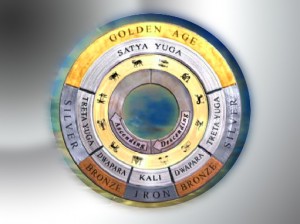 Vedic thought, like many ancient traditions throughout the world, speaks of human history as connected to greater cosmic and astronomical times cycles. These cycles can be equated to some degree at least to Ice Age cycles of a hundred thousand years and more. Yet we should note that several such cycles and influences exist on different levels, so the details of one cycle or another can be a subject of dispute. But that human life must follow greater natural time cycles is something that even modern civilization, with all of its science and technology, must accept in the ecological age. Our modern culture and all of its sophistication is still vulnerable to earthquakes, volcanoes, hurricanes, floods and droughts, among other natural forces.
Vedic thought, like many ancient traditions throughout the world, speaks of human history as connected to greater cosmic and astronomical times cycles. These cycles can be equated to some degree at least to Ice Age cycles of a hundred thousand years and more. Yet we should note that several such cycles and influences exist on different levels, so the details of one cycle or another can be a subject of dispute. But that human life must follow greater natural time cycles is something that even modern civilization, with all of its science and technology, must accept in the ecological age. Our modern culture and all of its sophistication is still vulnerable to earthquakes, volcanoes, hurricanes, floods and droughts, among other natural forces.
Generally Hindu thought agrees that humanity entered into a spiritual dark age around 3102 BCE, a similar date to the Mayan calendar that began in 3114 BCE. This is very interesting because modern civilization – which is highly materialistic in nature and arguably not very spiritually aware – regards the time of around 3000 BCE as when civilization as we know it today first began, with what it regards as the first cities, writing, and other technological developments.
In short, the Hindu view of history is sometimes opposite the modern view, and can regard the modern age as a dark age, and prehistoric eras as more spiritually aware. Yet Hindu thought also holds the hope that in the future we can unite modern science and ancient spirituality for a more enlightened culture on both inner and outer levels. This requires reclaiming our older spiritual past.
 Ancient India shows its own unique development of civilization in terms of agriculture, urban development, transportation, arts and crafts, religion and spirituality. It does not appear at any point as simply a borrowing from outside cultures or from currently better known civilizations to the East.
Ancient India shows its own unique development of civilization in terms of agriculture, urban development, transportation, arts and crafts, religion and spirituality. It does not appear at any point as simply a borrowing from outside cultures or from currently better known civilizations to the East.
Early Indian civilization can be traced to at least 7300 BCE in early cultures in the Ghaggar-Hakra valley – or what was known as the Sarasvati region in Vedic times – which remained central to civilizational development in the subcontinent for many thousands of years. Similar ancient village sites can be found in Baluchistan to the West (Mehrgarh) and may have occurred throughout the region.
There are also be a number of sites in Gujarat, including some under water today in the Gulf of Cambay, that reflect an oceanic and maritime basis to this ancient culture, whose earliest point of origins has yet to be determined and could go to a very early period.
Note quote below:
The beginning of India’s history has been pushed back by more than 2,000 years, making it older than that of Egypt and Babylon. Latest research has put the date of the origin of the Indus Valley Civilization at 6,000 years before Christ, which contests the current theory that the settlements around the Indus began around 3750 BC.
Ever since the excavations at Harappa and Mohenjo-daro in the early 1920s, the civilization was considered almost as old as those of Egypt and Mesopotamia.
The finding was announced at the “International Conference on Harappan Archaeology”, recently organized by the Archaeological Survey of India (ASI) in Chandigarh.
Based on their research, BR Mani, ASI joint director general, and KN Dikshit, former ASI joint director general, said in a presentation: “The preliminary results of the data from early sites of the Indo-Pak subcontinent suggest that the Indian civilization emerged in the 8th millennium BC in the Ghaggar-Hakra and Baluchistan area.”
“On the basis of radio-metric dates from Bhirrana (Haryana), the cultural remains of the pre-early Harappan horizon go back to 7380 BC to 6201 BC.”Excavations had been carried out at two sites in Pakistan and Bhirrana, Kunal, Rakhigarhi and Baror in India.
From this early era was marked a continuous development of culture up to the urban Harappan phase (3750 – 1700 BCE), when India marked the largest of the great civilizations of the ancient world. This Harappan era is also known as the Indus Valley civilization. More properly its name should be the Sarasvati civilization as the great majority of the archaeological sites are located on the now dried banks of the Sarasvati that was once a great river in North India, and is well described in Vedic texts. Landsat satellite photography and many studies by the Geological Survey of India have revealed the importance of the Sarasvati River as a major river in the subcontinent in early ancient times. The Sarasvati River is regarded in the Vedas as the ancient homeland of the Vedic people and their central region of habitation, much as the archaeology proves.
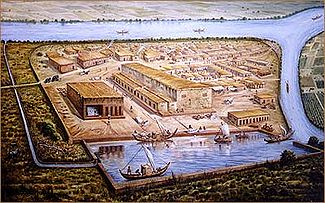 Ancient India during the Harappan era had one of the largest populations in the ancient world, far greater than the Middle East or Europe. It had the largest number of cities of any region of the time. Its urban culture spread over a larger area than any contemporary civilization, being greater in size than Mesopotamia and Egypt put together, extending from what is now the coast of Iran to Mumbai, from the Amu Darya River in Afghanistan to the West to the Ganga in India to the East. This culture endured longer with greater uniformity and less signs of internal breakdown or conflict than contemporary cultures of Mesopotamia. That such a vast civilization might influence the rest of the world needs more consideration.
Ancient India during the Harappan era had one of the largest populations in the ancient world, far greater than the Middle East or Europe. It had the largest number of cities of any region of the time. Its urban culture spread over a larger area than any contemporary civilization, being greater in size than Mesopotamia and Egypt put together, extending from what is now the coast of Iran to Mumbai, from the Amu Darya River in Afghanistan to the West to the Ganga in India to the East. This culture endured longer with greater uniformity and less signs of internal breakdown or conflict than contemporary cultures of Mesopotamia. That such a vast civilization might influence the rest of the world needs more consideration.
That it left an enduring mark upon the later civilizations of India cannot be doubted. It was not an historical anomaly or dead end, but seeded many of the later cultures of the region.
The Harappan civilization was centered on the Sarasvati River of Vedic fame. Its decline reflects the corresponding decline of that great river – which began by 3000 BCE and the Sarasvati ceased to be a major river in North India around 1700 BCE. At the end of the Harappan Era there occurred a relocation of the center of civilization in India primarily to the East and the nearby Ganga basin, with a movement of the same peoples and cultures. Yet there were also secondary movements of peoples to the south of India and to the west outside of India. There is no evidence of any major movements of populations into India at that time.
A study of the skeletal remains from various archaeological sites in ancient India, including in Harappan sites, shows the same basic ethnic groups in ancient India as in modern India, including the Caucasoid, Mongoloid and Australoid. This means that the same basic human types have been living in India and contributing to its civilization throughout the millennia. Some groups have certainly come into India from the outside and some have migrated out of India, as in other parts of the world, but the core population has remained remarkably continuous.
Early Indian civilization through the Harappan and pre-Harappan Era is one of the largest and most sophisticated in the entire world, as well as the largest urban civilization of its time. Yet to date there is no literature that has been specifically equated to it, even though Harappan sites have produced numerous seals, symbols and artifacts.
Similarly the Vedic literature from ancient India (which is often speculatively dated to after 1500 BCE or after the Harappan Era) is the largest and most detailed in the world, dwarfing anything that the rest of the world has preserved. The Four Vedas and their different branches extend to several thousand pages. However, by the speculations of many modern scholars, Vedic literature is a literature without a civilization to produce it, created by nomads or pastoral people who were illiterate and unsophisticated, and not part of any urban culture.
However, Vedic literature speaks of the same region of India as the Harappan and pre-Harappan ruins indicate, centered on the Sarasvati River of Vedic fame. Vedic literature speaks of the gradual drying up of the Sarasvati River that occurred in the Harappan Era. Vedic literature was preserved by the same ancient peoples that migrated from the Sarasvati to the Ganga.
If we look more deeply at the Vedic hymns we find a very sophisticated poetic language and symbolism. The Vedas present the oldest form of the Sanskrit language, regarded as one of the best and most perfectly formed of all languages. It is difficult to equate such a language with a primitive nomadic culture, but it would make sense relative to a great civilization like the Harappan.
If we equate Vedic literature with Harappan culture, we can solve this mystery of a civilization without a literature and a literature without a civilization.
Clearly Vedic literature needs a civilization and ancient India provides the archaeology that can easily be equated with it.
 The Vedas and Puranas reflect the development of civilization in ancient India beginning after a great flood that can be identified geologically with the end of the last Ice Age. That is the era of the current Manu, said to be the fifth, called Vivasvan. There are references to the era of the previous Manu called Chakshusa as well.
The Vedas and Puranas reflect the development of civilization in ancient India beginning after a great flood that can be identified geologically with the end of the last Ice Age. That is the era of the current Manu, said to be the fifth, called Vivasvan. There are references to the era of the previous Manu called Chakshusa as well.
Manu Vivasvan is portrayed as connected to the ocean as well, and in the Matsya Purana is said to have been a great yogi who migrated from Kerala to the north at the time of the flood. It is likely that the previous Manu was placed in South India, which during the last Ice Age when the ocean levels were higher covered a much larger area, the famous Kumari Kanda of Dravidian thought.
The central region of Manu after the flood was the Sarasvati-Drishadvati region that was the main site of habitation in ancient India in both the Harappan and the Pre-Harappan era.
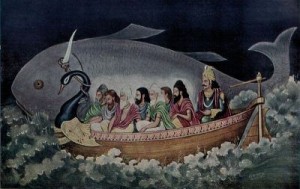 This can hardly be a coincidence, particularly since the Sarasvati disappeared as a major river in India over 3500 years ago. The Manu civilization of ancient India can easily be connected with archaeological remains.
This can hardly be a coincidence, particularly since the Sarasvati disappeared as a major river in India over 3500 years ago. The Manu civilization of ancient India can easily be connected with archaeological remains.
Vedic literature, we should note, does not portray any migration into India from the West, but shows an expansion out of the central Sarasvati region, after what is probably an earlier migration from the South. Curiously most of the Vedic rishis like the Angirasas, Bhrigus, Agastya and Vasishta are connected to the sea.
In this regard, the dominant geographical image in Vedic texts is the ocean. There are over a hundred and fifty references to the ocean in the Rigveda alone, with numerous additional references to ships and crossing the sea.
The universe is viewed as a series of oceans, with earthly, atmospheric and heavenly oceans. This is hardly the worldview of nomads from Central Asia but does reflect a maritime culture like that of ancient India.
Aryan Invasion and Migration Theories Discredited
Western scholars in the nineteenth century discovered a linguistic affinity between languages from Europe, Iran and Central Asia to India, which they named the Indo-European family of languages. They simplistically equated all these languages with an older Proto-Indo-European language (PIE) spoken somewhere, they thought, in Eastern Europe and Central Asia, from which its speakers migrated and brought this type of languages to the rest of the world, entering into India at a very late period around 1500 BCE, which meant that prior to that time the civilization of India was not Vedic. This was the basis of the Aryan Invasion Theory (AIT), which has since been modified into a migration theory, since no real evidence of any destructive invasion during that time period has ever stood the test of time.
This means the idea that early ancient civilization in India was not Vedic was not based upon any solid evidence but only on linguistic speculation, that too in a new discipline that remains itself highly speculative overall. While this Aryan invasion/migration theory has long sought archaeological and other more solid forms of evidence, such proof has not been found, or what of this nature has been proposed, like Mortimer Wheeler’s proposed massacre at Mohenjodaro, has been disproved.
To date there is no archaeological evidence of any Aryans invading or migrating into India.
There are no encampments that can be identified with any incoming Aryans, no Aryan skeletal remains or any Aryan racial type at all, no destroyed cities in the path of the invading Aryans, no Aryan horse or chariot trails coming into the region – nothing of the kind. In short, there is nothing in the archaeological record to show any Aryan intrusion apart from the developments of the existing and indigenous cultures. What as been found is a largely indigenous civilization in ancient India that relocated east after 1700 BCE when the rivers they relied upon, notably the Sarasvati River, no longer provided enough water to sustain their urban culture.
Proponents of the outside origin for the Vedic people argue that horses and chariots are not found, except in perhaps some isolated instances, in ancient India, while these are common in Vedic hymns, suggesting a difference between the cultures. However, there are archaeological remains of horses and chariots in ancient India, including a common Harappan design of a spoked six-pointed wheel. In addition, there are no significant horse remains in nearby Afghanistan or Central Asia that are regarded as the source of the horse in India (and Harappan influence extended to these regions as well). Such arguments resting upon the lack of one item or another cannot counter the many items found in common between the Vedic and ancient Indian archaeology.
We must remember that the dominant animal on the Harappan seals is a mythological creature, a one honored bull or four-legged creature, and that the seals ignore many common animals that existed in the region. The seals are hardly a list of zoological specimens. In addition, the seals have mythological animals that are composed of body parts from other animals. We have such composite creatures mentioned in Vedic hymns as well.
The Greeks under Megasthenes record that they found in India in the fourth century BCE, a record of 153 Kings going back 6400 years to the date of around 6700 BCE. This is a much longer record than even the Egyptian pharaohs. Similar numbers can be found in the Hindu Puranas and their ancient king lists. Clearly even in later ancient times, the antiquity and continuity of civilization in ancient India was well known to the people and their culture.
Some Proposed Dates
Era of the Rigveda
7500 – 3500 BCE
Era of the Four Vedas and Early Era of the Puranas and Mahabharata
3500 – 1700 BCE
Late Vedic Era and middle period of the Puranas and Mahabharata
1700 – 500 BCE.
Classical India
500 BCE – 700 ADE
The Vedic collection that exists historically, what we could call the Veda Vyasa collection, is said in the Puranas to be the twenty-eighth complication of the Vedas, not the first, with earlier compilations going back to previous well-known Vedic rishis and ultimately to Manu. This indicates a great antiquity to Vedic culture even at the time of Veda Vyasa.
The Rigveda period covers the early start of culture and civilization in ancient India from the end of the Ice Age down to the beginning of the urban Harappan era. The main Rigvedic symbol, which is that of the deity Indra, who released the waters from the mountains to flow into the sea, can be interpreted as an end of the Ice Age myth, when the great Himalayan glaciers of the Ice Age melted.
The Harappan Era mainly reflects the period when all four Vedas and their branches were known and used, and when texts like the Puranas and Mahabharata were in their formative phases.
The Late Vedic Era is more properly speaking the main period of the Puranas, in which their core texts took shape. Teachings like Samkhya, Yoga and Vedanta became prominent, with Buddhism and Jainism emerging as well.
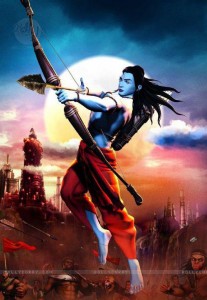 It is difficult to give precise dates or actual life stories even for figures of a few centuries ago. Whether Jesus lived or what his life actually was, for example, is a matter of doubt. Dealing with figures that could be more than five thousand years old poses yet greater difficulties. Their stories were recorded and preserved, and sometimes embellished in later times, and can reflect aspects of those later eras as well. But we do have king lists from ancient India that are accurate in historical times like that of the Buddha, and so we can at least place these figures in a lineage or time line. We know that Krishna existed long before Buddha and Rama long before Krishna in the Puranic king lists.
It is difficult to give precise dates or actual life stories even for figures of a few centuries ago. Whether Jesus lived or what his life actually was, for example, is a matter of doubt. Dealing with figures that could be more than five thousand years old poses yet greater difficulties. Their stories were recorded and preserved, and sometimes embellished in later times, and can reflect aspects of those later eras as well. But we do have king lists from ancient India that are accurate in historical times like that of the Buddha, and so we can at least place these figures in a lineage or time line. We know that Krishna existed long before Buddha and Rama long before Krishna in the Puranic king lists.
Ramayana
The Ramayana reflects a period of time at least thirty kings antecedent to Krishna according to the Puranas. If we were to date Krishna at around 3100 BCE, the traditional date, we would place Rama, sometime before, perhaps before 4000 BCE.
Mahabharata
The Mahabharata was composed in several layers from a key text to a massive encyclopedic work. There are several things that can be used to date it.
The Mahabharata describes the Sarasvati River as in its decline, no longer directly reaching the sea, but broken in the middle of its course. This was the case in the Harappan or late Harappan era. The traditional date of 3100 BCE for Krishna also marks a similar condition to the Sarasvati, as would a slightly later date up to perhaps 1700 BCE at the latest.
The astronomy of the Mahabharata reflects also the time of around 3000 BCE, though some later references can also be found in the text. It is likely that the Mahabharata began to be composed in the Harappan era and had some additions going on in the post-Harappan era, or even later.
In general late Vedic texts like the Brahmanas refer to the astronomical era in which the vernal equinox was located in Krittika or the Pleiades, marking an era of 2500 – 1700 BCE. Earlier references to Rohini and Mrigashiras equinox periods take us back to over 4000 BCE in Vedic literature and in the Mahabharata.
Yet however we determine the dates of individual figures, the antiquity of Vedic culture in India goes back probably ten thousand years. This does not mean that the existing Vedic literature that we have includes all aspects of ancient India’s culture and peoples. Other groups, teachings and cultural influences probably existed in this vast subcontinent over so many thousands of years. But the Vedic culture does indicate one of the main cultures of the region, if not its primary cultural influence. To Be Continued
Author: Vamadev Shastri
Acharya Pandit Vamadev Shastri ( David Frawley) is an American Hindu author, publishing on topics such as Hinduism, Yoga and Ayurveda. David Frawley is an expert in ayurveda, Vedic astrology, yoga, and tantra, all of which, he says, have their basis in Vedanta. Indeed it is the interdisciplinary approach to Vedanta that he sees as his particular contribution in demystifying eastern spirituality. David Frawley has written a number of books on all these disciplines, including Yoga and Vedanta, and Ayurveda and the Mind. His Vedic translations and historical studies on ancient India have received much acclaim, as have his journalistic works on modern India. Pandit Vamadeva Shastri was also the founder and the first president of the American Council of Vedic Astrology from 1993-2003. He is also a Patron Founder of the British Association of Vedic Astrology.
(12797)
Latest posts by Vamadev Shastri (see all)
- Vedic Dawn : The Spiritual Reawakening – November 13, 2012
- The Four Vedas – November 21, 2011
- The Six Schools of Vedic Insight – November 20, 2011

Pretty fascinating! I am very glad that finally somebody is putting it in words and talking about it publically! As a proud Indian we should know our history. Keep up the good work pandit ji! Om! Rashmi